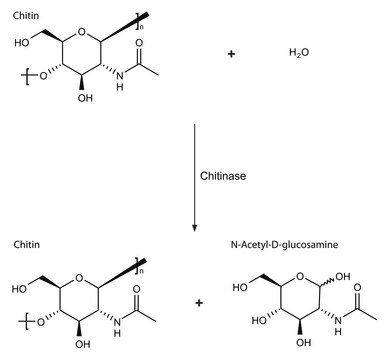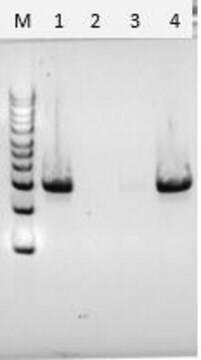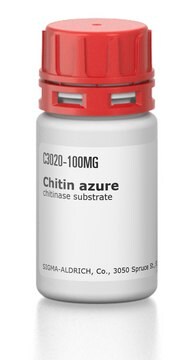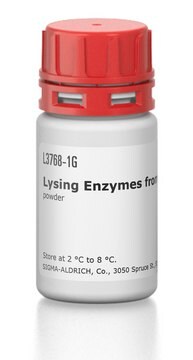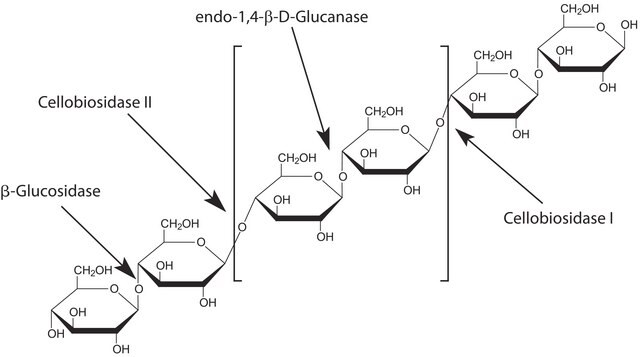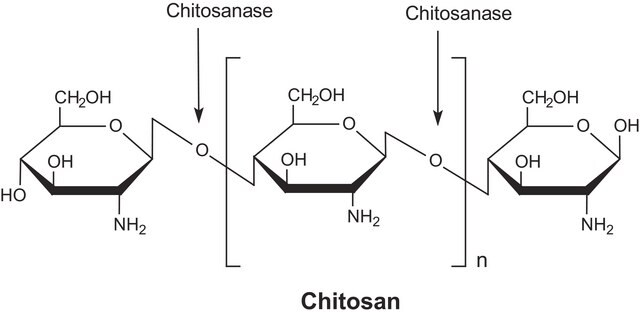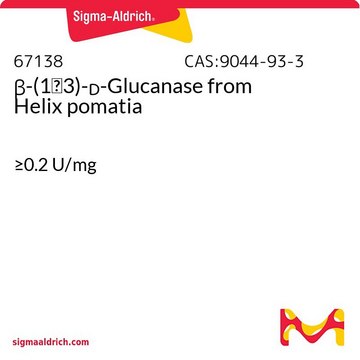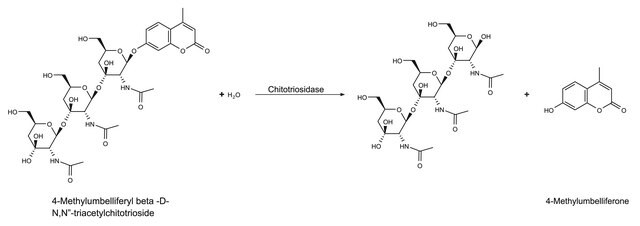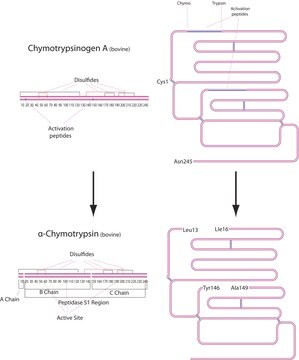C6137
Chitinase from Streptomyces griseus
lyophilized powder (essentially salt free), ≥200 units/g solid
Synonim(y):
N-acetylo-glukozaminidaza-chitobiaza, Enzymy trawiące chitynę, poli(β-(1→4)-[2-acetamido-2-deoksy-D-glukozyd])- glikanohydrolaza
About This Item
Polecane produkty
Formularz
lyophilized powder (essentially salt free)
Poziom jakości
aktywność właściwa
≥200 units/g solid
masa cząsteczkowa
30 kDa
rozpuszczalność
H2O: soluble 0.90-1.10 mg/mL
temp. przechowywania
−20°C
Szukasz podobnych produktów? Odwiedź Przewodnik dotyczący porównywania produktów
Opis ogólny
The enzymatic hydrolysis of chitin to N-acetyl-D-glucosamine involves two consecutive enzyme reactions:
- The first reaction, chitodextrinase-chitinase, is a poly(β-(1→4)-[2-acetamido-2-deoxy-D-glucoside])- glycanohydrolase, which removes chitobiose units from chitin.
- The second activity is N-acetyl-glucosaminidasechitobiase, which cleaves the disaccharide to its monomer subunits, N-acetyl-D-glucosamine.
Zastosowanie
Human health care: Asthma.
Pharma: preparation of chitooligosaccharides and N-acetyl D glucosamine,
Preparation of single-cell protein
Isolation of protoplasts from fungi and yeast
Control of pathogenic fungi
Treatment of chitinous waste, mosquito control and morphogenesis
Działania biochem./fizjol.
Cechy i korzyści
Definicja jednostki
One new 1 hour unit = approx. 50 old 48 hour units.
substrat
Hasło ostrzegawcze
Danger
Zwroty wskazujące rodzaj zagrożenia
Zwroty wskazujące środki ostrożności
Klasyfikacja zagrożeń
Resp. Sens. 1
Kod klasy składowania
11 - Combustible Solids
Klasa zagrożenia wodnego (WGK)
WGK 3
Temperatura zapłonu (°F)
Not applicable
Temperatura zapłonu (°C)
Not applicable
Środki ochrony indywidualnej
Eyeshields, Gloves, type N95 (US)
Wybierz jedną z najnowszych wersji:
Masz już ten produkt?
Dokumenty związane z niedawno zakupionymi produktami zostały zamieszczone w Bibliotece dokumentów.
Klienci oglądali również te produkty
Powiązane treści
Znajdź odczynniki do lizy komórek i ekstrakcji białek, takie jak bufory do lizy komórek, zestawy do ekstrakcji białek, enzymy ekstrakcyjne i inne środki wspomagające lizę do izolacji i oczyszczania białek.
Metody lizy komórek i ekstrakcji białek obejmują przegląd różnych technik, od rozpuszczania detergentami po mechaniczne rozbijanie, wspierając potrzeby badawcze.
An overview of cell lysis and protein extraction methods including detergent solubilization, freeze-thaw lysis, osmotic shock, sonication, enzymatic cell lysis, and mechanical disruption techniques such as Dounce, Polytron, and mortar and pestle homogenization.
Metody lizy komórek i ekstrakcji białek obejmują przegląd różnych technik, od rozpuszczania detergentami po mechaniczne rozbijanie, wspierając potrzeby badawcze.
Nasz zespół naukowców ma doświadczenie we wszystkich obszarach badań, w tym w naukach przyrodniczych, materiałoznawstwie, syntezie chemicznej, chromatografii, analityce i wielu innych dziedzinach.
Skontaktuj się z zespołem ds. pomocy technicznej